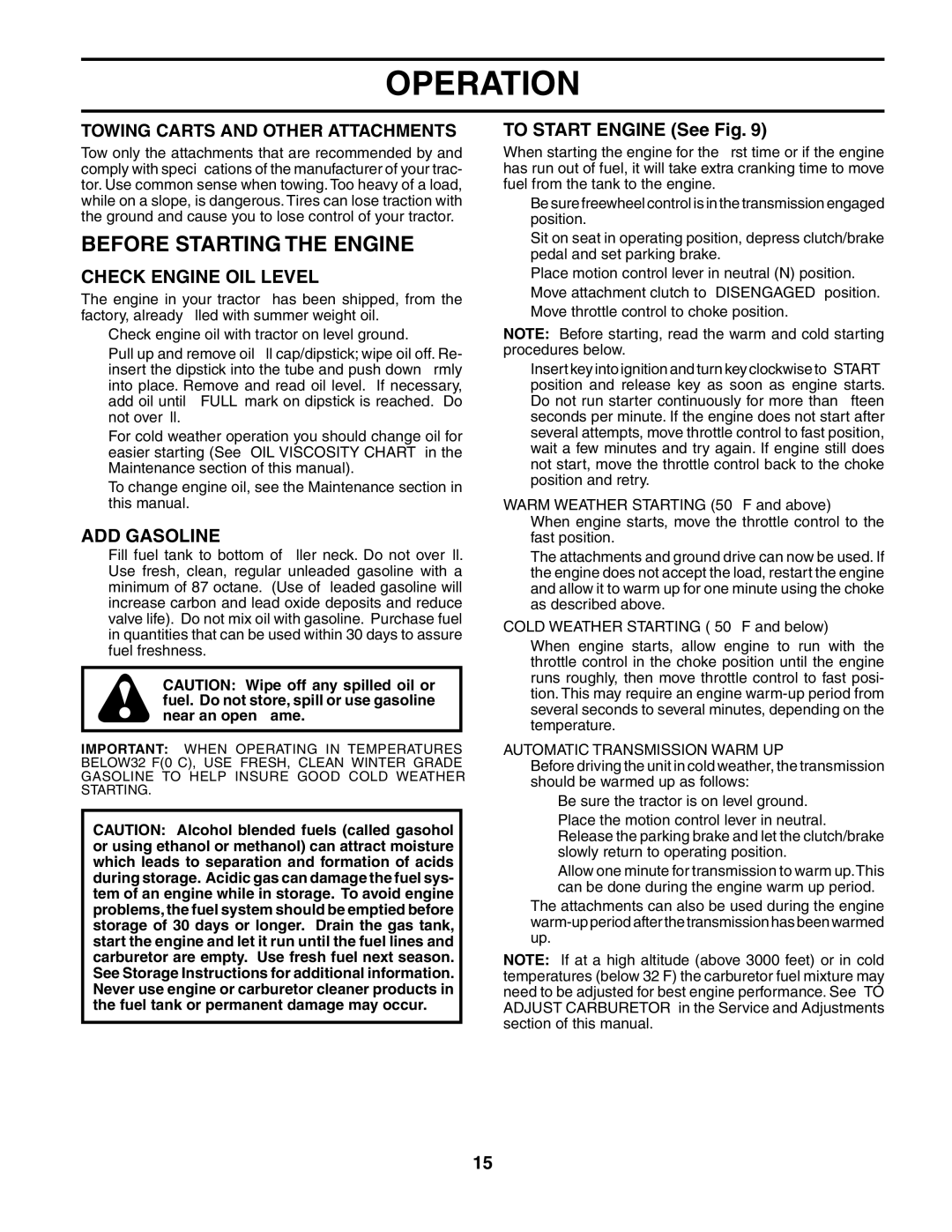CTH151 specifications
The Husqvarna CTH151 is a standout in the realm of lawn care, designed to deliver exceptional performance, reliability, and ease of use. This compact tractor combines advanced technology with practical features, making it a fitting choice for both residential and commercial landscaping tasks.One of the defining features of the CTH151 is its robust engine. Powered by a reliable Briggs & Stratton engine, the tractor ensures ample power for tackling various mowing conditions. This engine is designed for durability and easy starting, providing peace of mind for users who depend on their equipment for consistent performance.
The CTH151 boasts a cutting deck size of 42 inches, allowing it to efficiently manage medium to large mowing areas. The deck’s design optimizes grass dispersion, resulting in a clean and uniform cut. Furthermore, the cutting height can be easily adjusted to suit different grass types and seasonal changes, providing flexibility for any lawn care routine.
The innovative Dual Hydrostatic transmission system of the CTH151 allows for smooth and precise control, enabling the operator to navigate through tight spaces and around obstacles with ease. This feature is especially beneficial for those with intricately landscaped yards. With its zero-turn capability, users can expect improved maneuverability, reducing the need for trimming and enhancing overall mowing efficiency.
Ergonomics play a crucial role in the design of the Husqvarna CTH151. The comfortable seat and intuitive controls allow for extended periods of use without fatigue. The dashboard features clear indicators and easy-to-reach controls, making the tractor user-friendly for both seasoned operators and newcomers alike.
Safety is a priority with the CTH151, equipped with features like an automatic blade brake and a seat switch that stops the engine when the operator leaves the seat. These features enhance the overall safety of the tractor, providing reassurance while performing yard tasks.
In terms of maintenance, the CTH151 is designed with accessibility in mind. Oil changes and blade replacements can be carried out with minimal effort, making upkeep straightforward and manageable.
Overall, the Husqvarna CTH151 combines power, efficiency, and user-friendly features, establishing itself as an invaluable tool for anyone serious about maintaining a pristine lawn. With its thoughtful design and advanced technologies, it ensures that grass cutting is not just a chore, but an enjoyable and satisfying experience.

